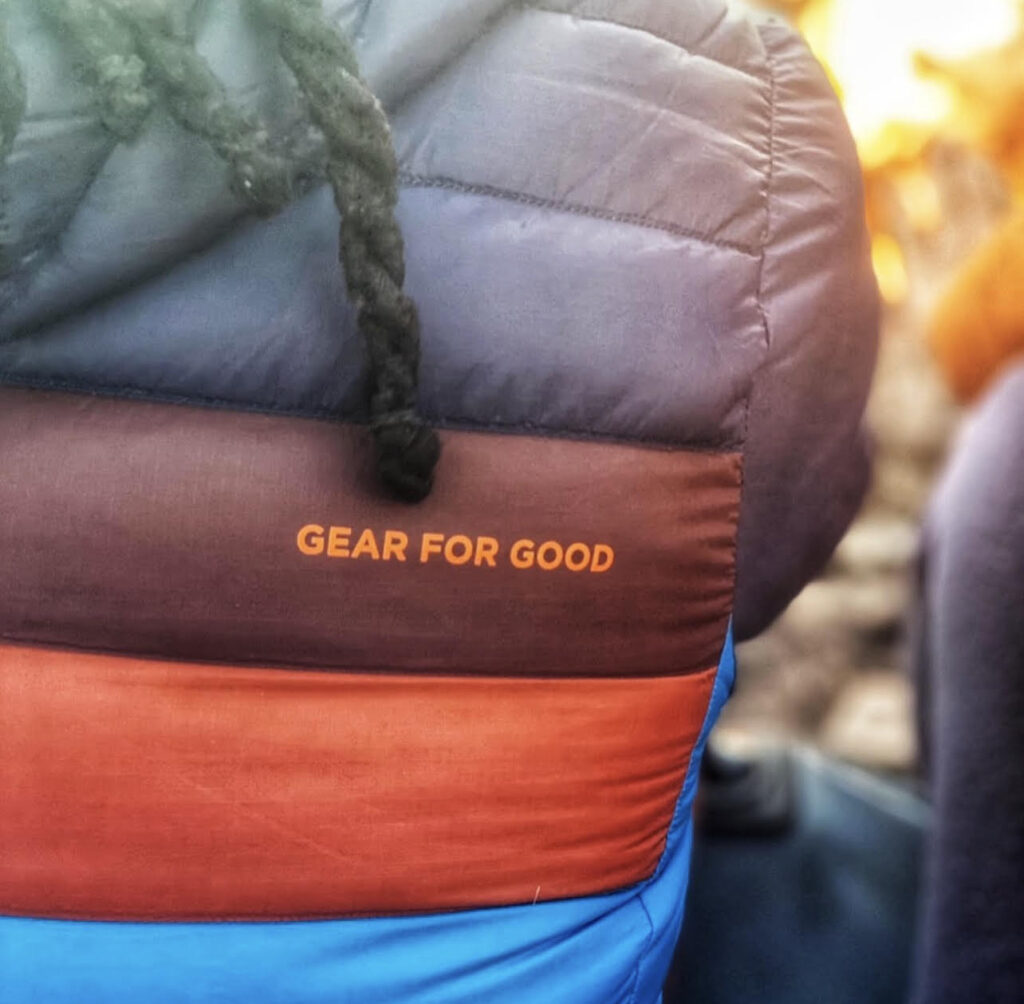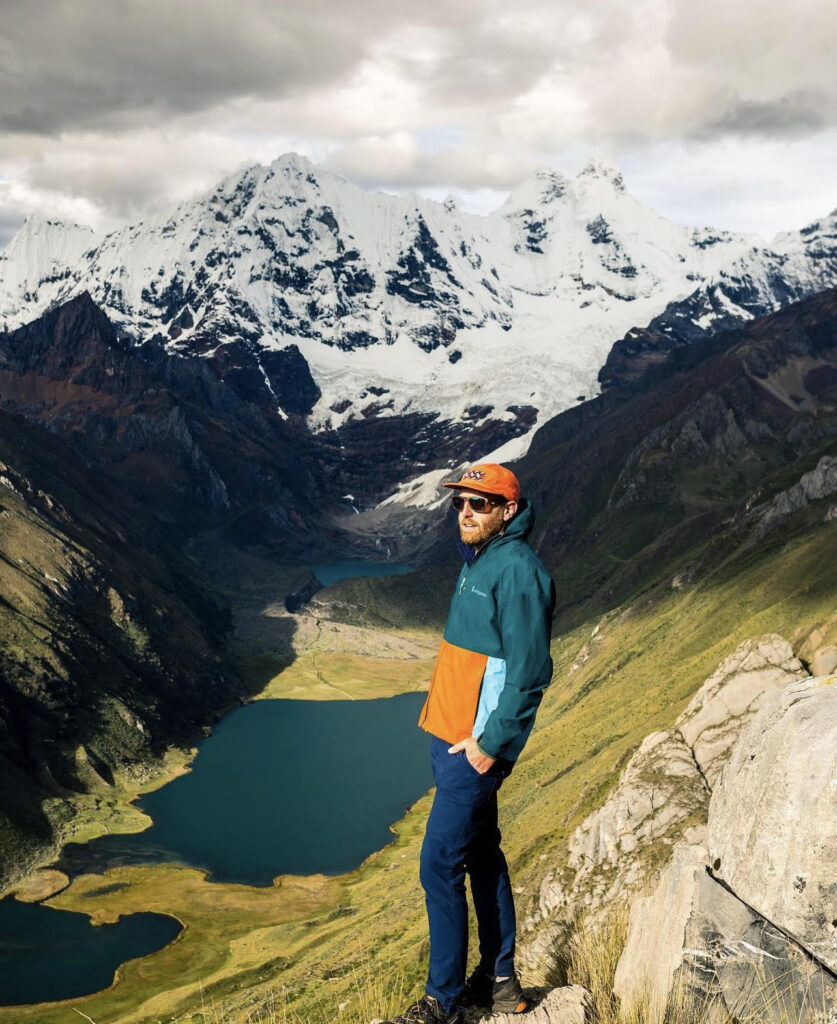For a growing number of consumers—particularly within younger generations—assigning purpose to a brand cannot be an afterthought. It must be incorporated into the business’s values and practices from the ground up.
One such company is Cotopaxi, a founder-led, direct-to-consumer brand that makes sustainably-designed outdoor gear. But beyond the products, it’s deeply committed to developing and uplifting communities and dedicates a percentage of its revenue to nonprofits working to improve the human condition.
That’s one of the things that attracted Brad Hiranaga, its new Chief Brand Officer, to the gig. “One of the major goals for Cotopaxi is how do we create a blueprint that will work not just for this company, but for other companies. So that they can take it and use it in ways that will do good for whatever their organization’s trying to do. That’s exciting,” he told Chief Marketer this week. “It’s open code for other folks.”
We spoke with Hiranaga—one of our first Marketers on Fire—about his vision for the company, how he believes purpose-driven marketing will evolve, lessons learned from his recent stint as CBO at General Mills and what marketers with C-suite aspirations should be focusing on to advance their careers.

Chief Marketer: You’ve only been at Cotopaxi for a month or so, but what is your current vision for the company?
Brad Hiranaga, Chief Brand Officer at Cotopaxi: As they’re crossing the hundred million mark in sales this year, they felt it was time to expand the marketing efforts and start to double-down on the resources to put against the brand. I’m coming in at a really exciting time for them.
A little context will help paint the picture. They’re a founder-led brand. Davis Smith is the entrepreneur who started the company nine years ago. The small team that’s been there on the ground from the beginning has done a truly incredible job of building a brand. When I came into this, having worked on lots of big brands with lots of big budgets, [I noticed] some of the amazing actions that they’ve taken as a brand have been instinctual. Davis as a founder is a well-spoken leader and believes in culture, and a lot of his personal values around leadership and taking care of people really feed into the brand. So as I’ve come into it, it’s nowhere near starting from scratch.
Now I have to build this brand up. They’ve got great visual assets, they’ve got great products, they’ve got an amazing mission. They’ve got a really good culture. Now they’re ready to go much bigger and get out into the world and into culture. So how do I take all of these really good parts and sync them together so that more people can get exposed to the brand and are aware of what this brand is? And not only that it makes great gear and products that you can wear that are cool and fashionable. There’s a bigger intention behind it of doing good.
CM: What was your motivation for joining the company?
BH: The reason I joined was twofold. It was the potential of the brand to be a lifestyle, iconic brand in culture. But then a secondary part for me is Davis’s mission, which is how do you create a model and a blueprint for other businesses to follow that can transform capitalism? We are a business built on doing good, and we obviously want be successful so that we can do more good. And because it’s so much in the DNA, what an opportunity to come in and get it out there so that mission can come to life and scale.
CM: Do you have any ideas as to how you’re going to do that tactically, through specific marketing channels? How do you plan to approach that?
BH: We’re doing a couple things. It’s a direct-to-consumer brand, so it was built up through e-comm and now it’s expanding into its own stores and retail channels. It sells through wholesale, too, with partners like REI and Dick’s. The distribution’s getting larger. But to date, most of the marketing efforts have been twofold. One, you can run it digitally through social, through anything to lead you into the ecommerce experience.
And then two, more at a local grassroots level, where they’re building stores, but also building communities, mostly in the West Coast mountain regions. There’s an event they’ve done for the last seven or eight years called Quest, a gamified event where a couple thousand people over 24 hours accomplish a bunch of different missions around adventure or doing good. A lot of people got to know the brand that way. Obviously, Covid had a little bit of an impact on it the last of couple years.
As I come in, we’re kicking off ways to expand out from a media perspective. We’re looking more holistically around how and where we invest in a smart way, given where we’re located geographically. But also, this is a brand that’s built on e-comm, so it can go anywhere. How do we want to invest in that? There’s a lot of experimentation to figure out the best way to spend behind it to drive scale.
And then PR, lifestyle and culture is going to be a big part of where the brand can extend itself. It’s already naturally showing up in places like that, with influencers and people who like the brand, or it’ll show up in product placement, in shows and movies. But [it can] be placed within popular culture with a lot more intentionality.
CM: Purpose-driven marketing is kind of baked into the brand itself. What’s different about that in terms of marketing processes?
BH: It starts with the founder. Davis grew up all over Latin America, where he saw unequal opportunities to prosper and create a fair living condition for your family. That was always something that he was striving for: to be able to give access to opportunity for everybody, and is there a model to be able to do that.
I’ve worked on brands where you have mission goals and you have a purpose that you’ve articulated. But probably the brand was built to sell something. It was selling a product or a good or a service, whereas this was truly built on the intention of doing good. That’s where the difference is. What do we need to go do so that we can share it?
One of their big pillars is eradicating extreme poverty and creating fair opportunities. There’s a Cotopaxi foundation that donates a percentage of every sale so that that foundation can donate to organizations that are trying to live that same mission. Most of them are in Latin America right now and that’ll probably continue to expand, but that’s just built into the business model. And then from a planet health perspective, the business has been climate neutral for the last couple years.
They want to be as transparent as possible, but in everything, so other companies can take it and leverage it for themselves. I know consumers and people like myself are interested in businesses doing that, and I will support businesses that do that. But the scale of it comes if other companies that participate in those kinds of business practices also do it. So, how do I share that and get more people to participate in it.
CM: Do you think that this model of leading by example will be the way to go for companies in the future? How do you see purpose-driven marketing progressing overall?
BH: I do. Given the amount of information that’s out there on any company, it’s so easy to find out what a company is doing and what they stand for and what they believe. Cotopaxi is built on that transparency and willing to share and look at a bigger mission. It’s in the business of trying to build human sustainability, which is broader than just the planet. It’s the breadth of everything.
One of the major goals for Cotopaxi is how do we create a blueprint that will work not just for this company, but for other companies, so that they can take it and use it in ways that will do good for whatever their organization’s trying to do. That’s what it was founded on, and that’s exciting. It’s open code for other folks.
As a marketer I’ve been in roles before that are more about CoEs and best practices. You’re always trying to figure out the framework for this or for that that we can share. This [at Cotopaxi] as a framework to share is exciting because you can have conversations like this and be more open about that, versus saying we don’t want to share IP, so I’m only going to share this little bit that makes our marketing look good. It’s a very different approach.
CM: What are some lessons learned from your gig at General Mills that you’re applying to your new role?
BH: I was fortunate to work with some founder-led brands there that had been built like this. Annie’s was one of them. [CEO] John Foraker came in, and similar to Davis, he was very passionate about what they were doing and had a strong belief in the brand, what they stood for and the impact they could have. That was very helpful to have experience working on different size brands and different life stages of brands, in addition to all of the great stuff you learn at a big company that knows how to do marketing like General Mills. Sitting on brands like Cheerios and Totino’s and Pillsbury, I could bring that [knowledge of] what best in class looks like from a standardm classical CPG marketing [perspective]. But also, here’s how you need to work in a smaller, more iterative, more entrepreneurial brand, and now apply that to a brand at Cotopaxi’s life stage.
The other thing I’d say is that over the last several years I was at General Mills, a lot of the focus for myself and our team was around being more articulate and vocal about the mission, internally and externally, and how that connected to the brands. And it’s a little bit different there, because it’s a portfolio of lots of brands. So I had to do a lot of work to figure out how that mission comes through these brands and how we set not just sales and profit targets, but also force-for-good targets that the brands would have to go achieve and be held accountable to. Those KPIs around doing good became part of the planning process and the quarterly check-in process. Those kinds of things are already built-in with Cotopaxi. But they need to continue to be developed and elevated.
CM: Lastly, for marketers looking to ascend to the C-suite, what skills they should be honing?
BH: This has been on my mind a lot, especially recently. I’m coming from a big company, a big brand with big resources. At that size of brand, the situation for marketers for the last five years has been about how do I infuse digital and data and performance marketing into my business? Now I’m on the other side of this at a small brand. I know how to infuse data in performance. It’s how the brand was built. But now, how do I create a brand that people are going to care about that has the same kind of awareness?
Whatever career path I [took] had to have the latter in that for me because I wanted to experience it from the other side. And I felt that as a marketer, if I only knew the way of big brand, big business… I would be less well-rounded than having the other experience of going into [the way] all brands are now being built today. Staying close enough to the marketing and the technology and the consumer to keep it at my fingertips was very intentional.
I think for marketers that are coming up, if there’s a way to have experiences on both types of brands, legacy nostalgic brands that you learn a ton of stuff on in addition to smaller, digitally-native brands that are built that way, it’s important to have both those types of experiences. Because otherwise, you can eventually pigeonhole yourself into being just a performance-based marketer, or just a big brand marketer. When you step up into CMO roles and C-suite roles, you don’t have to be necessarily an expert on every single thing, but you have to understand how all of those parts fit together for the bigger picture of what you’re trying to drive. You have to understand the consumer and where technology’s going. So being curious and constantly reinventing yourself and your skills is crucial.
Image source: Cotopaxi Instagram







